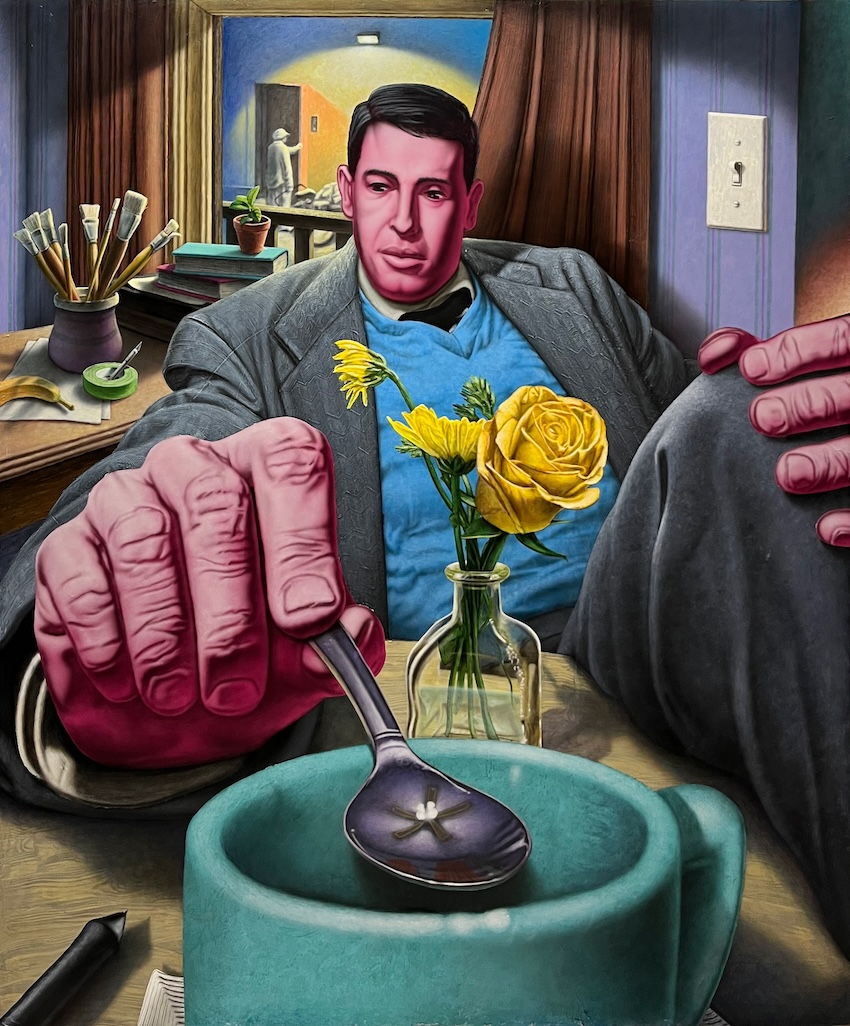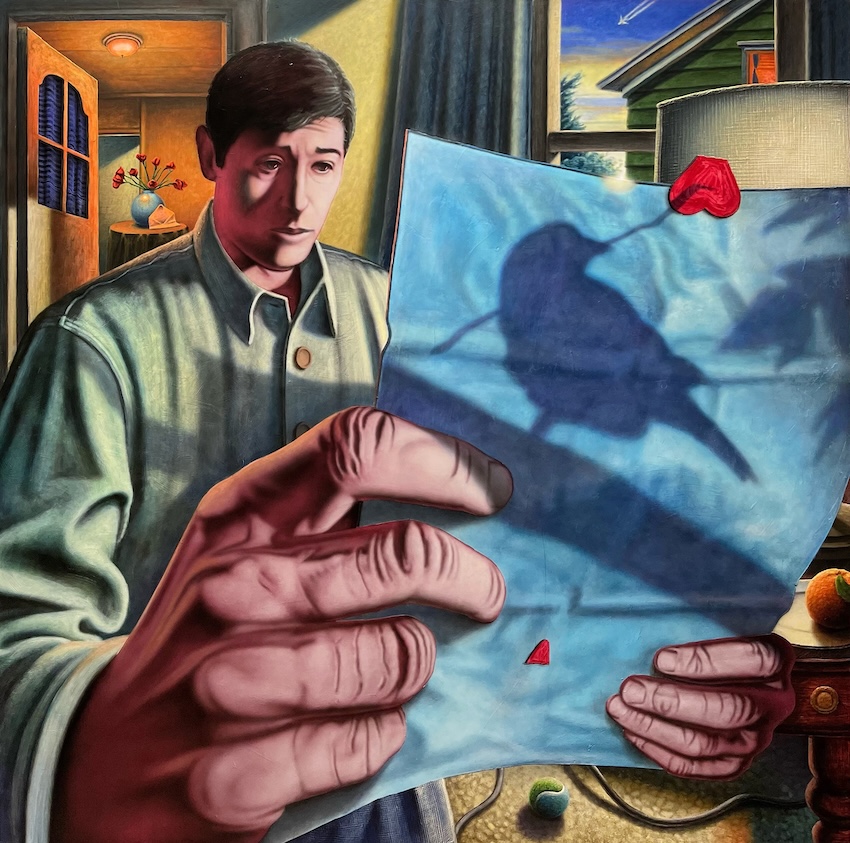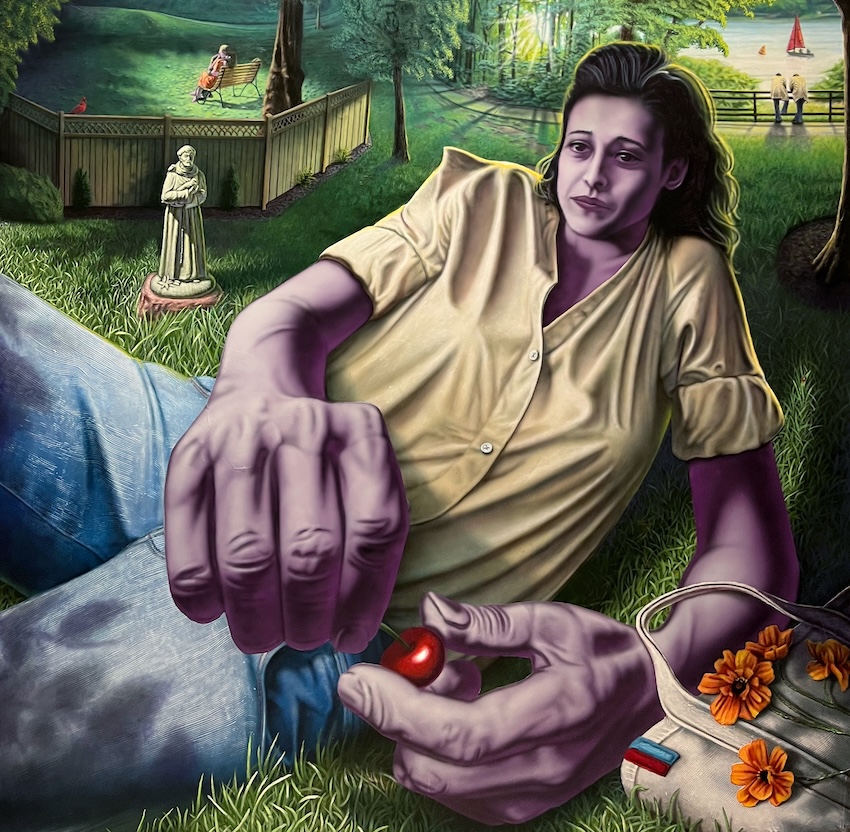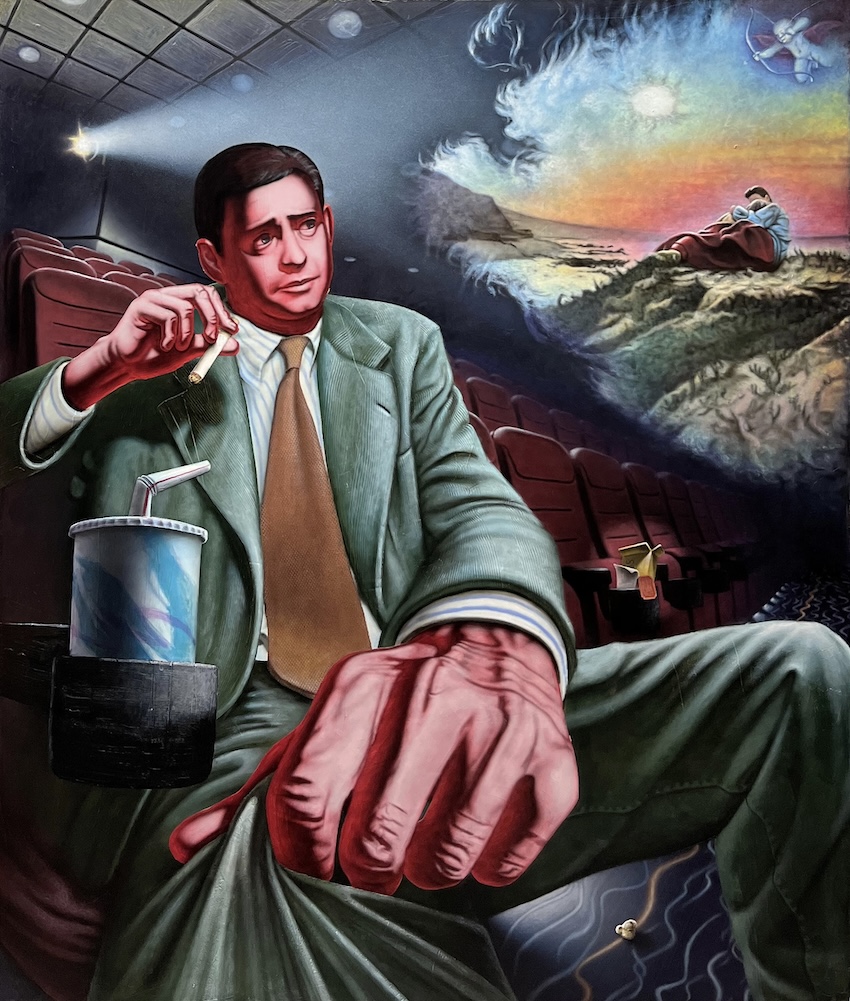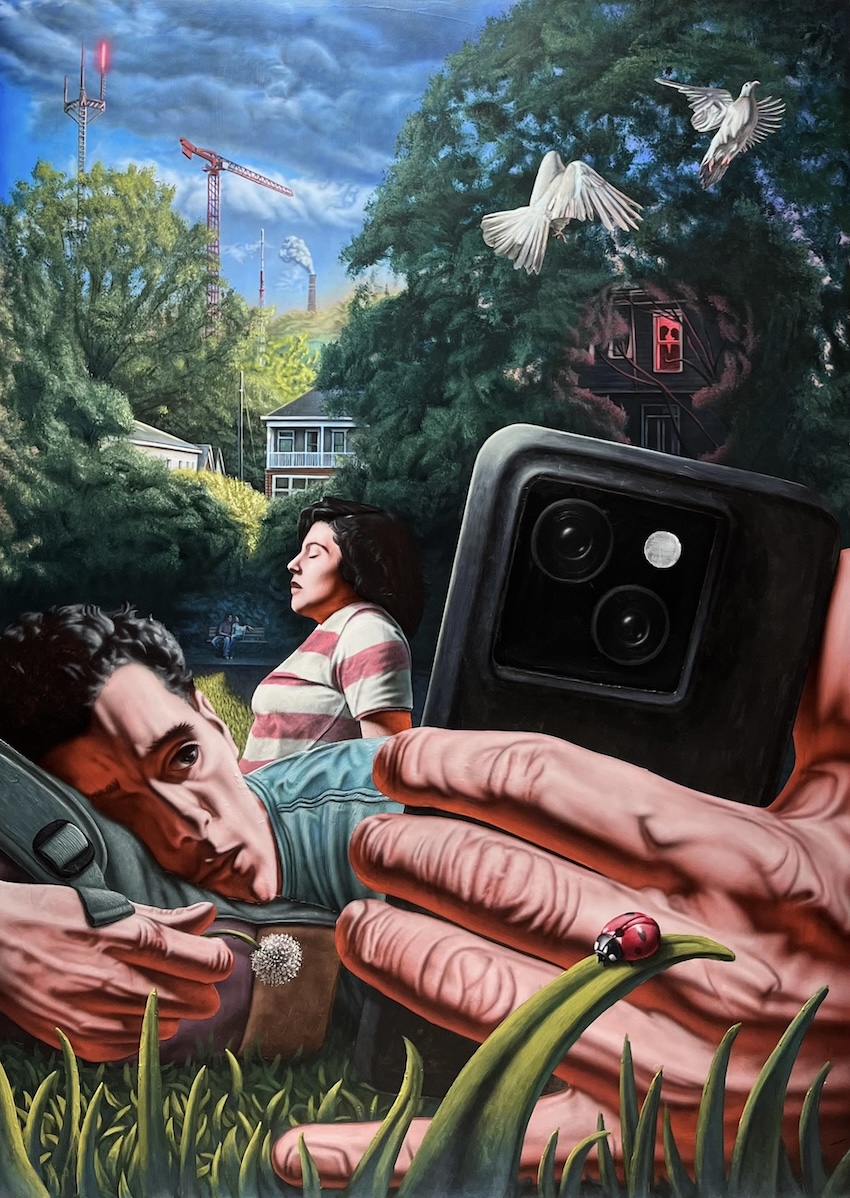A show to make sure to catch before it comes down is Carter Flachbarth's Thrown in Time opening at Richard Heller Gallery, Santa Monica on view through October 12, 2024.
Flachbarth's work centers itself around the mechanics of painterly illusions, engaging the viewer's perception to unveil the inherent delusive nature of paintings. Often featuring sullen figures with highly expressive features, his paintings create vignettes that delve into the psychology of the subjects through narrative driven actions and gestures. Flachbarth's approach to the history of figurative painting combines traditional techniques with contemporary tools and imagery, drawing inspiration from the digital age. Raised in suburban America, Carter's connection to culture was primarily shaped by film and digital spaces, ultimately influencing his relationship to painting.
In Thrown in Time, Carter Flachbarth creates a body of work that analyzes the pursuit of authenticity through image-making within the digital era. The title of the show is a play on words between Andrey Tarkovsky's "Sculpting in Time" as well as Martin Heidegger's concept of "Thrown-ness." In the former, Tarkovsky presents an idea of authenticity as a necessary prerequisite to create a compelling work of art. In the latter, Martin Heidegger asserts that "thrown-ness" is the world we are born into that determines much of what we care about. Who we are born to, where we are born, and when we were born fundamentally shape our core ideals (our facticities). An individual pursuing authenticity must then become aware of these facticities. This body of work grapples with the difficulties of this authentic pursuit in an age of increasing rapidity and mediation of information that alters and assimilates the worlds we are born into. An age where individual facticities meld together in a centralized digital cauldron. The work inquires how an artist may navigate the digital age to find an authentic purchase.
The paintings in this show are a reflection of this contemporary quarrel of authenticity. Often using anachronistic imagery, the work immediately creates a rift between the viewer and the subject. Without utilizing primary references from the artist's personal life, the viewer is reminded that the paintings are constructed from beyond the artist's facticities. Instead of heralding the intimate qualities between painter and subject (such as the idea of the muse) these paintings stand resolutely as "not from life". By utilizing his aesthetic language, Flachbarth combines, alters, and iterates upon these impersonal references to paradoxically express something from his internal world. The formal qualities of the paintings mimic this gesture. The high chroma and forced perspectives offer a reminder of the highly choreographed, refined, and constructed existence of the paintings. Rather than offering a natural point of view of the subject, the paintings offer an artificially filtered quality that is free from the dust of an actual lived experience.
Flachbarth's paintings are most easily characterized by the motif of the hand. Flachbarth considers the hands to be a metaphorical stand-in for himself within the work. Influenced by art historical notions of the painted hand, Flachbarth views the hand as both the subject and creator within the work. Both the participant and artificer. Another reminder that the artist is the mediating agent between the audience and the painting itself. Highlighting both the optical and metaphorical illusory qualities inherent in painting.




